Occupational Environment Monitoring at the Granite Processing Plant
99,000 ₫
Note: The above price is calculated for one sample, and the price may vary depending on the area of the environment to be monitored and market fluctuations. For more accurate pricing support, please refer to the quotation table or contact our consulting staff directly.
Occupational environment monitoring at a granite processing plant is a process of collecting, analyzing, and evaluating workplace factors that may harm workers’ health.
Table of Contents
Toggle1. Overview of Granite Processing Factories
a. What is a Granite Processing Factory?
Factory for granite processing is a facility where the processing, crafting, and production of granite products take place. Granite is a natural or artificial material widely used in construction and interior decoration.

b. Production stages in a granite processing factory
Production stages in a granite processing factory include:
- Preparation and selection of raw materials: Granite can be natural or artificial. Before processing begins, raw materials must be selected and quality-checked to ensure uniformity and meet production requirements.
- Stone cutting: The stone cutting process is usually performed using CNC stone cutting machines or manual stone cutters. This stage creates granite slabs with the desired size and shape.
- Grinding and polishing: After cutting, granite is ground and polished to produce smooth, shiny, and aesthetically pleasing surfaces.
- Drilling and engraving: Granite can be drilled and engraved to create holes, grooves, or patterns on the product surface.
- Edge finishing: Edge finishing is done to create strong and attractive edges for granite slabs.
- Assembly: After processing components, they may be assembled into finished products such as tables, wall panels, sinks, etc.
- Quality inspection: Each finished product must be checked for quality to ensure compliance with standards and requirements.
- Packing and transportation: After quality inspection, products are carefully packed and prepared for delivery to customers.

c. Machinery used in granite processing factories
In granite processing factories, various types of machinery are used to perform production stages. Common machines include:
- CNC stone cutting machine: A machine integrated with CNC (Computer Numerical Control) technology that cuts granite according to pre-programmed shapes and lines. CNC machines are highly accurate and capable of cutting complex patterns.
- Stone grinding machine: Used to grind and polish granite surfaces. Types include fan grinders, spindle grinders, disc grinders, belt grinders, etc.
- Stone drilling machine: Used to drill holes in granite. Types include hydraulic drills, vertical drills, horizontal drills, etc.
- Stone engraving machine: Used to engrave patterns, letters, or designs on granite surfaces. Types include CNC engraving machines, manual engraving machines, laser engraving machines, etc.
- Edge finishing machine: Used to create strong and attractive edges for granite slabs. Types include edge trimming machines, straight edge machines, etc.
- Stone washing and drying machine: Used to clean and remove dust, grease, and residues from granite surfaces. Machines can be automatic or industrial washing and drying units.
- Transportation and lifting equipment: To move and transport heavy granite slabs, factories use lifting machines, cranes, or conveyor systems.

d. Occupational diseases for workers in granite processing factories
Workers in granite processing factories may be exposed to the following occupational diseases:
- Respiratory diseases: Exposure to stone dust and chemical fumes during granite processing may cause respiratory inflammation, pneumonia, or other respiratory issues.
- Skin diseases: Prolonged contact with chemical compounds during processing may cause skin irritation, eczema, dermatitis, or other skin issues.
- Musculoskeletal disorders: Tasks involving lifting, moving, and handling granite can cause musculoskeletal strain, injuries, back pain, or joint problems.
- Heat-related illnesses: Granite processing environments may have high temperatures, especially around machinery, causing heat stress, heat exhaustion, or burns.
- Accidents: Operation of machinery, moving heavy granite, and other processing tasks may lead to work accidents, injuries from impact, cuts, broken stones, or puncture wounds.
To prevent and minimize occupational diseases, factories must comply with labor safety regulations, ensure proper personal protective equipment, provide adequate ventilation and dust extraction, train and raise safety awareness among workers, and implement accident and injury prevention measures.

e. Common types of granite on the market
Common types of granite include:
- Granite: Natural stone with high durability and diverse colors, often used for construction, flooring, countertops, and sinks.
- Marble: Natural stone with diverse colors and beautiful veins, used for decorative applications like tabletops, panels, and flooring.
- Quartz: Artificial stone made from resin and natural quartz, hard, non-porous, and easy to maintain, commonly used for kitchen and bathroom surfaces.
- Slate: Natural stone with rough surface and diverse colors, used for roofing, flooring, and exterior cladding.
- Quartzite: Natural stone formed under high pressure and temperature, very hard and durable, often used for countertops and indoor cladding.
- Travertine: Natural stone with porous structure and colors ranging from white to brown, used for flooring, cladding, and decorative surfaces.
2. Overview of Occupational Environment Monitoring Services
a. What is occupational environment monitoring in granite processing factories?
Occupational environment monitoring (or workplace environment measurement) in granite processing factories is the activity of collecting, assessing, and analyzing measured indicators of workplace environmental factors in order to take timely actions to minimize environmental hazards to workers’ health and prevent occupational diseases. Occupational environment monitoring is mandatory for granite processing factories.
Monitoring is crucial in caring for, protecting, and enhancing workers’ health, as the primary workforce of a business directly generates profit. Workers who are regularly exposed to risk factors above allowable limits may suffer health impacts and occupational diseases.
REGISTER FOR OCCUPATIONAL ENVIRONMENT MONITORING SERVICE
b. Nam Viet’s occupational environment monitoring program
Nam Viet’s occupational environment monitoring program is designed by engineers specializing in occupational safety and environmental protection. The program uses modern measurement methods to monitor air quality, water, microclimate factors, physical factors, and dust in the workplace. This program is essential for ensuring a safe working environment and protecting workers’ health.
Moreover, Nam Viet’s program contributes to researching and developing new solutions to improve workplace environmental quality. With a dedicated and professional monitoring team, Nam Viet’s exclusive program is a breakthrough in occupational safety management and environmental protection in Vietnam.

c. Standardization in occupational environment measurement procedures
Standardization in Nam Viet’s occupational environment measurement procedures is crucial for ensuring the quality of measurement results. The program follows recognized standards and procedures of the Ho Chi Minh City Department of Health. This ensures collected data is reliable for workplace evaluation and for making decisions to improve working conditions and protect workers’ health.
Standard procedures also guarantee that measurements are conducted by highly skilled monitoring professionals with years of experience, allowing managers and experts to trust results from An Toàn Nam Việt and make accurate, valuable decisions for worker health and environmental protection.
By applying standardized measurement procedures, Nam Viet demonstrates its commitment to ensuring a safe workplace and protecting worker health, while contributing to improving occupational safety and environmental management in Vietnam.
d. Reporting results of granite processing factory monitoring
Occupational environment monitoring results are prepared according to Form 04, Appendix III of Decree 44/2016/ND-CP and produced in 2 copies: one for the contracting workplace and one retained by the monitoring organization.
The retention period for monitoring results follows legal regulations and is kept indefinitely.

e. Frequency of occupational environment monitoring according to the law
According to Clause 2 of Article 18 of the Law on Occupational Safety and Health 84/2015/QH13, employers must conduct occupational environment monitoring to assess harmful factors at least once a year.
f. Deadline for submitting occupational environment monitoring reports according to the law
Reports must be submitted before December 31 each year. Enterprises of production facilities are required to submit monitoring results to the local Department of Health where their main office and employees are located.
When there are changes in technology, production processes, or facility upgrades that may introduce new harmful factors, enterprises must update occupational hygiene records regarding these factors and conduct environmental monitoring.
g. Penalties for violations of occupational environment monitoring by employers
According to Article 27 of Decree No. 12/2022/ND-CP dated 17/01/2022 on administrative penalties in labor, social insurance, and Vietnamese workers working abroad under contract:
- Clause 2: A fine of VND 2,000,000 – 5,000,000 for employers who fail to publicly inform workers at the monitoring site and the site under inspection about monitoring results and hazard assessment immediately after results are available.
- Clause 3: A fine of VND 20,000,000 – 40,000,000 for employers who do not conduct occupational environment monitoring to control harm to workers’ health according to the law.
- Clause 4: A fine of VND 40,000,000 – 60,000,000 for employers who collude with monitoring organizations to falsify environmental monitoring activities but without reaching criminal liability.
3. Harmful environmental factors for workers in granite processing factories
Working in granite processing factories can expose workers to several harmful environmental factors that may affect their health. Some environmental factors encountered during work include:
- Stone dust: The granite processing process can generate stone dust, consisting of fine particles that can penetrate the respiratory system and cause irritation or pneumonia.
- Chemicals: During granite processing, chemicals such as solvents, adhesives, or polishing agents may be used. Exposure to these substances can cause irritation to the skin, eyes, and respiratory system, and in more severe cases, damage to the liver and kidneys.
- Noise: Machinery and tools used in granite processing can produce high noise levels. Long-term exposure to noise can damage hearing and cause other health issues such as stress, insomnia, and increased risk of cardiovascular diseases.
- Temperature and humidity: Some granite processing procedures can generate high temperatures and low humidity, making it difficult for the body to maintain a comfortable working environment.
- Occupational accidents: Working in an industrial environment carries risks of accidents such as collisions, cuts, fires or explosions, falling heavy objects, and injuries from using complex tools and machinery.
REGISTER FOR OCCUPATIONAL ENVIRONMENTAL MONITORING SERVICE
4. Measures to improve the working environment in granite processing factories
To improve the working environment in granite processing factories and protect workers’ health, the following measures can be applied:
- Dust management: Install an efficient dust extraction system to reduce stone dust in the air. Ensure regular cleaning of work areas to remove accumulated stone dust.
- Ensure ventilation: Provide a good ventilation system to ensure clean airflow and reduce stone dust concentration in the working environment.
- Use of personal protective equipment: Ensure workers are equipped with full personal protective equipment such as masks, safety glasses, gloves, and protective clothing to avoid direct contact with stone dust and chemicals.
- Training and guidance: Provide training and guidance for workers on the proper use of personal protective equipment, safe working procedures, and occupational disease prevention measures.
- Periodic inspections: Conduct regular inspections of the working environment to ensure compliance with standards for air quality, noise, temperature, and humidity.
- Enhanced hygiene: Maintain workplace hygiene by regularly cleaning equipment, machinery, and work areas to reduce the impact of stone dust and waste.
- Risk management: Assess and manage potential hazards such as occupational accidents and risks associated with the use of machinery and equipment during granite processing.
- Implement maintenance measures: Ensure granite machinery and equipment are properly maintained to reduce the risk of accidents and unexpected malfunctions.
- Periodically organize occupational environmental monitoring in factories, collect and analyze harmful factors affecting workers, and adjust to reduce hazards to prevent occupational diseases.
5. Benefits of periodic monitoring in granite processing factories
An Toan Nam Viet provides businesses with excellent benefits when using occupational environmental monitoring services in accordance with Decree 44/2016/ND – CP on the management and control of harmful factors in the working environment affecting workers.
- Businesses can proactively control harmful factors in workshops or factories.
- Receive consultation and recommendations on measures to reduce harmful factors and improve the quality of the working environment.
- Indirectly protect human resources, the main factor in business development.
- Minimize the impact of occupational diseases on human health, thereby reducing future medical treatment costs.
- Improved worker health leads to better product quality and stable, maintained production output.
- Comply with occupational safety regulations, avoiding legal risks.
- Create reputation and professionalism in all aspects, enhancing the brand value of the business.
Nam Viet’s environmental monitoring service is a solution to minimize the impact of occupational diseases, contributing to a healthy and high-quality working environment.

6. National occupational environmental monitoring center
Occupational Environmental Monitoring Center of Nam Viet is a professional unit for monitoring and measuring the quality of the working environment throughout all provinces and cities in Vietnam. With a team of experienced monitoring specialists, the center uses modern measuring equipment to ensure accuracy and reliability.
In addition to providing monitoring services, the center supports customers in planning, handling, and monitoring occupational environmental issues. With the motto “customer-centered,” the center prioritizes customer satisfaction, meets all customer needs, and is committed to delivering the best solutions for businesses.
REGISTER FOR OCCUPATIONAL ENVIRONMENTAL MONITORING SERVICE
With investments in technology, equipment, and human resources, Nam Viet’s monitoring center has become a reputable unit in the field of occupational environmental monitoring in Ho Chi Minh City with the following objectives:
- We always value our brand reputation and the quality of our service products.
- We provide customers with the best and most suitable solutions possible.
- Together with a team of experienced Masters and Engineers, we aim to protect the environment and benefit businesses.
- By working with Nam Viet Environmental Monitoring team, companies receive professional services from experts and gain the best cost advantages.
The occupational environmental monitoring process at Nam Viet includes the following basic steps:
- Before conducting monitoring, our company ensures all machinery and equipment are adjusted and calibrated according to legal regulations.
- Strictly implement the occupational environmental monitoring procedures as committed to the Department of Health.
- Honestly report occupational environmental monitoring results to employers.
- If monitoring results indicate unsafe conditions for workers, Nam Viet will provide remedial solutions, and the employer will implement the following:
- Apply measures to improve working conditions to minimize harmful factors and prevent occupational diseases.
- Organize health checks to detect early occupational and work-related illnesses for workers in unsafe environments.
- Provide material compensation for workers according to labor laws.

7. Occupational environmental monitoring service quotation
To help businesses conduct occupational environmental monitoring professionally and effectively, Nam Viet provides customers with a high-quality and reasonably priced service quotation for occupational environmental monitoring.
- Our quotation provides detailed information on the costs of the monitoring services offered, including transportation, measurement, analysis, and reporting fees. Customers can be fully assured of the accuracy and reliability of the monitoring reports we provide.
- We commit to offering the most competitive and reasonable prices on the market, and are always ready to promptly answer all questions regarding monitoring services professionally.
- With Nam Viet’s quotation, customers can easily choose service packages that meet their needs. We are committed to delivering the highest satisfaction with professional service quality.
1 review for Occupational Environment Monitoring at the Granite Processing Plant
No comments yet

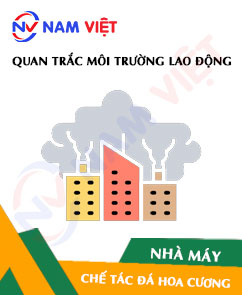
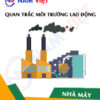
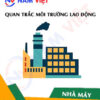




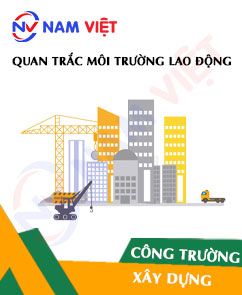
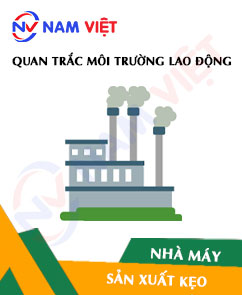
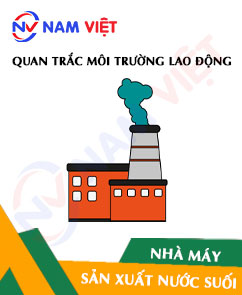

maituyet.cuong12
Good labor environment monitoring service!